Fernando Carreiro / Seller
Published products
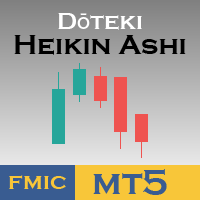
The standard Heikin Ashi candle representation has an open value that is equivalent to an Exponential Moving Average (EMA) of the Total Price , of which the alpha value of the EMA is fixed at 0.5 (equivalent to an EMA period of 3.0). In this dynamic version, the period can be changed to whatever value one wishes to use, which also allows one to approximate multi-time-frame analysis, or use the low or high value as a sort of trailing stop-loss. The crossing of the real Close price over the Heikin
FREE

This indicator is based on the original “ Time Segmented Volume (TSV) ” developed by Worden Brothers, Inc . However, I added an extra few features to this one. One can choose the price to be applied, instead of only having the default close price used by the original. One can also choose which volume weighting to use, including a pseudo-volume based on true range, or no volume weighting at all.
FREE

The standard Heikin Ashi candle representation has an open value that is equivalent to an Exponential Moving Average (EMA) of the Total Price , of which the alpha value of the EMA is fixed at 0.5 (equivalent to an EMA period of 3.0). In this dynamic version, the period can be changed to whatever value one wishes to use, which also allows one to approximate multi-time-frame analysis, or use the low or high value as a sort of trailing stop-loss. The crossing of the real Close price over the Heikin
FREE

This indicator is based on the original ZigZag provided as a source code example with MetaTrader installations. I rewrote it with some extra features for displaying the “depth” channel and the respective break-outs. It also allows one to observe prior zig-zag points. Optionally, it can alert the user when break-outs occur. The alerts can be simply on the terminal or also via push notifications on a mobile device, with your own custom text.
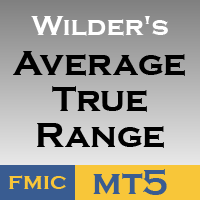
This indicator implements the original “ Average True Range (ATR) ” developed by John Welles Wilder Jr. , as described in his book— New Concepts in Technical Trading Systems [1978] . It uses Wilder’s moving average , also known as the smoothed moving average (SMMA) , instead of a simple moving average (SMA) as used on MetaTrader’s built-in ATR indicator. The default period applied is 7, instead of 14, as per the description in his book.
FREE
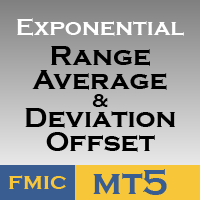
This indicator was inspired by John Welles Wilder's average true range (ATR) , but with some extra information. Similarly, it calculates the exponential moving average of the true range, but using the standard alpha weight instead of Wilder's . It also calculates the average deviation of the range average, and displays it as an offset. This helps not only identify a change more quickly, but also its impact.
FREE

This indicator was inspired by John Welles Wilder's average true range (ATR) , but with some extra information. Similarly, it calculates the exponential moving average of the true range, but using the standard alpha weight instead of Wilder's . It also calculates the average deviation of the range average, and displays it as an offset. This helps not only identify a change more quickly, but also its impact.
FREE
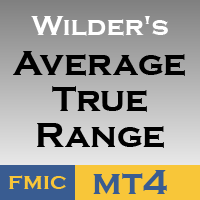
This indicator implements the original “ Average True Range (ATR) ” developed by John Welles Wilder Jr. , as described in his book— New Concepts in Technical Trading Systems [1978] . It uses Wilder’s moving average , also known as the smoothed moving average (SMMA) , instead of a simple moving average (SMA) as used on MetaTrader’s built-in ATR indicator. The default period applied is 7, instead of 14, as per the description in his book.
FREE
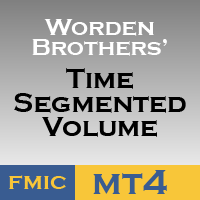
This indicator is based on the original “ Time Segmented Volume (TSV) ” developed by Worden Brothers, Inc . However, I added an extra few features to this one. One can choose the price to be applied, instead of only having the default close price used by the original. One can also choose which volume weighting to use, including a pseudo-volume based on true range, or no volume weighting at all.
FREE
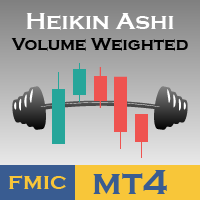
Most traders are aware of the famous Japanese Heikin-Ashi indicator, created in 1700s by Munehisa Homma . It is sometimes spelled Heiken-Ashi , but its meaning remains the same, namely “average bar” in Japanese. This is an implementation of that very well known Heikin Ashi indicator, but with a few added features. For one, it allows for its values to be weighted by the volume , be it the tick-count volume , real volume , or pseudo-volume based on the true range. The major benefit is to reduce th

This indicator is based on the original ZigZag provided as a source code example with MetaTrader installations. I rewrote it with some extra features for displaying the “depth” channel and the respective break-outs. It also allows one to observe prior zig-zag points. Optionally, it can alert the user when break-outs occur. The alerts can be simply on the terminal or also via push notifications on a mobile device, with your own custom text.

Most traders are aware of the famous Japanese Heikin-Ashi indicator, created in 1700s by Munehisa Homma . It is sometimes spelled Heiken-Ashi , but its meaning remains the same, namely “average bar” in Japanese. This is an implementation of that very well known Heikin Ashi indicator, but with a few added features. For one, it allows for its values to be weighted by the volume , be it the tick-count volume , real volume , or pseudo-volume based on the true range. The major benefit is to reduce th

This indicator tracks historical tick‑data and displays lines on the main chart for the highest Ask or the lowest Bid quotation prices. For those of you who have ever run a visual back-test using the modelling “Every tick based on real ticks” , you may have noticed that the Strategy Tester displays line graphs for the high Ask quote price and the low Bid quote price. Many find it annoying! However, some serious traders consider it highly informative—it helps evaluate the impact of the Spread on
This indicator processes historical tick‑data and tracks either the Spread in points (not pips), the Mid prices, the Ask or the Bid quotation prices, and displays the results in a sub‑window as OHLC candles. Charts on MetaTrader only show the bars/candles based on Bid quotes prices (or Last quote prices for certain types of symbols). However, that is not the complete picture as there is also the Ask quote prices to consider and the Spread between them. Every newbie trader has eventually discover